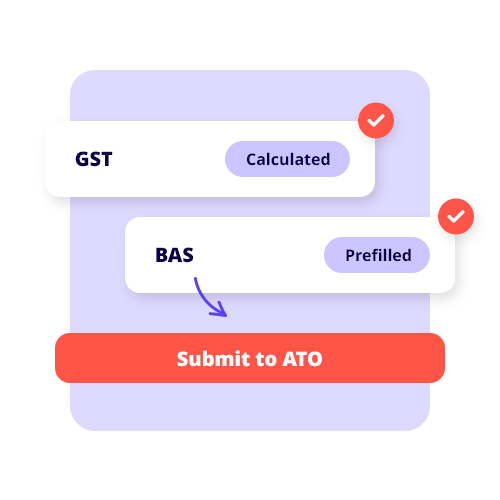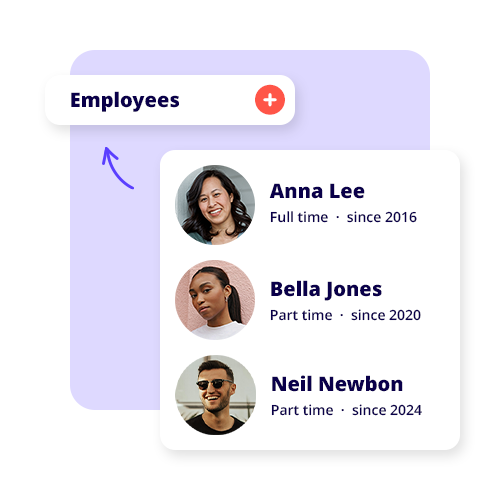Accounting software for real estate
Efficiently monitor performance, expenses, and clients with user-friendly accounting software designed for real estate agents.

Why should you choose us?
Take the hassle out of GST & compliance
With automatic compliance updates for PAYG and GST, real manufacturing companies can easily keep up to date with their business needs regarding the latest legislation. Plus, you’ll always be working on the latest version to give you peace of mind and more time for doing what you love.

Track hours and pass expenses on to clients
When time is literally money it’s vital you have an easy way for your employees and subcontractors to record their time and track expenses. Your employees can log their billable hours and submit their expenses on the go. Our cloud-based accounting software provides everything real estate agents need, all in one place, perfect for those who spend time out of the office on inspections.

30+ financial reports & a real-time dashboard
Set up the Reckon One dashboard with all the real estate business data that matters to your real estate business. See this financial information in real-time, giving you an overall picture of your real estate business and more control of your cash flow. Drill down into this data for even more information on your agency.

Easily manage unlimited real estate staff



![]()
“ Using Reckon software – with its simple interface – has afforded me a lot of time to work on business-critical projects and drive new customers and growth…not having to hire a bookkeeper also gives me more quality time with my family.”
– Rohan Sanderson, Operational Advancement Solutions
set-up reckon one
Reckon makes bookkeeping easy
Rohan needed a solution to get his bookkeeping done while he focused on rapid business growth. By using Reckon One for payroll, invoicing, quotations, BAS, and general bookkeeping, Rohan can manage his business seamlessly while he grows the business and juggles family life.
Learn more about Rohan’s journey with Reckon One here.
Related resources

Small business news wrap for August!
What’s been happening recently in the Australian business landscape? What are the top news stories through August 2023 that may affect your small business? Let’s do a quick recap to keep you up to speed…

What do rising interest rates mean for your business?
What effect are interest rate rises having on Australian small businesses. Let’s investigate the recent situation’s impact with SMEs and sole traders in mind.

Free downloadable templates
Explore our range of guides and easy-to-use templates for helping you running your business.
Plans that fit your business needs and your pocket
30-DAY FREE TRIAL + SAVE 50% FOR 6 MONTHS ON ALL PLANS.
Payroll Essentials
For businesses with up to 4 employees
$6/ month
Was $12
Save $36 over 6 months
Up to 4 employees**
Process pay runs
Email payslips
Manage Single Touch Payroll
Calculate superannuation
Track leave & entitlements
Payroll reporting
Payroll companion app
Employee facing app
Track timesheets
Employee expense claims
Free data migration††
Free onboarding session
Advanced reporting
Payroll Plus
For businesses with up to 10 employees
$12.50 / month
Was $25
Save $72 over 6 months
Up to 10 employees**
Process pay runs
Email payslips
Manage Single Touch Payroll
Calculate superannuation
Track leave & entitlements
Payroll reporting
Payroll companion app
Employee facing app
Track timesheets
Employee expense claims
Free data migration††
Free onboarding session
Advanced reporting
Payroll Premium
For larger businesses
$25/ month
Was $50
Save $150 over 6 months
Unlimited employees**
Process pay runs
Email payslips
Manage Single Touch Payroll
Calculate superannuation
Track leave & entitlements
Payroll reporting
Payroll companion app
Employee facing app
Track timesheets
Employee expense claims
Free data migration††
Free onboarding session
Advanced reporting
† Transactions that exceed the 1000 limit will be subject to the BankData Fair Use Policy.
†† Free data migration offer includes 1 year of historical data + YDT only. Paid subscriptions only.
Helping thousands of businesses with their accounting
Frequently asked questions
How does the 30-day free trial work?
The Reckon One free trial allows you to try our accounting software for a period of 30 days to ensure it meets the needs of your business. After this period, your subscription will automatically convert to a paid one to avoid any interruptions to your data. However, if you find that Reckon One small business invoicing software is not suitable for your needs, you can cancel your subscription before the billing renewal date and your credit card won’t be charged.
If life got in the way and you weren’t able to use your trial, no worries! Just give our friendly support team a shout and we’ll see if we can get you up and running again.
Can I change my software plan later on?
Definitely! Reckon One offers you the flexibility to change your plan to fit the unique needs of your business. Whether it’s downgrading or upgrading, you can easily make these changes right from your Reckon account.
How do I switch from another accounting software to Reckon One?
Making the switch to Reckon One from your current small business accounting software is a breeze with our data migration service!
Head to our data migration page and see how our free* migration service works.
What do I need to get set up with Reckon One?
There is no software installation required. All you need is a device with an internet connection to access your Reckon One account. Simply sign up for an account on our website and start using Reckon One to manage your business.
Is my data secure?
We use the best technology to ensure your data is safe and secure. Our accounting software for small business, Reckon One, is built with cutting-edge HTML5 technology and hosted on Australian servers powered by Amazon Web Services, a leader in cloud data storage.
Do you provide customer support?
We offer support through email, chat, and phone with our local team and resources such as webinars, a small business resource hub, and an online community to help you succeed from the moment you start using Reckon One.
Expert training is also available through the Reckon Training Academy or our trusted partners (accountants and bookkeepers).
Can I grant access to other people?
What are the advantages of using accounting software for small businesses?
Mobility
Online accounting software like Reckon One gives you the flexibility and mobility to manage your finances from any device. Gain clarity over your business’s financial position, automate your accounting process & reduce data entry, track business transactions, get paid faster, and more.
The latest version
Our small business accounting software Reckon One is automatically updated in the cloud. So you’ll always use the latest version without having to manually download compliance updates and accounting features.
Cost-effective
Reckon One pricing works on a SaaS (software as a service) pricing model. So you pay a low monthly fee instead of a large upfront payment for your software license. Paying month to month also means you aren’t locked into a contract and can cancel anytime.
Security
Your data is safely stored in the cloud so you won’t be affected by theft or accidents to physical hardware. All data servers have 24/7 security and several layers of encryption.
Is there a minimum subscription period?
Enjoy the benefits of Reckon One with the flexibility of monthly payments and if you decide it's not the right fit for your business, you can easily cancel at any time.
Try Reckon for free today
30-day free trial. Cancel at any time.




